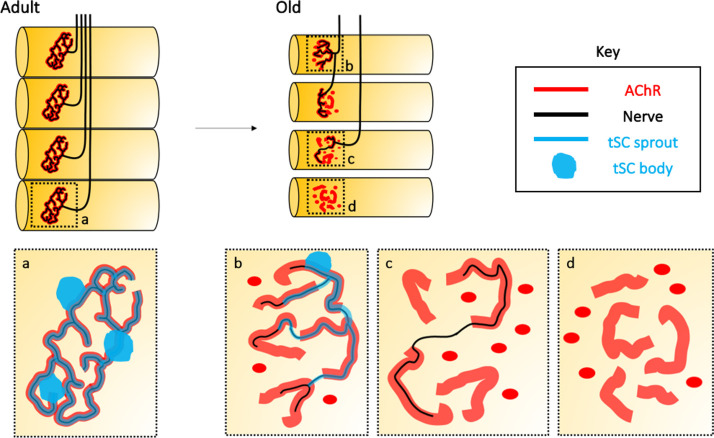Figure 1.
Age-associated changes in the neuromuscular junction (NMJ) structure. In adults, each muscle fiber is innervated by a single motor neuron-associated endplate that constitutes the NMJ. This correlation is lost upon aging, and fibers may become partially or completely denervated, and often reinnervated by bridges arising from neighboring NMJs. (a) Adult NMJs typically show a branched morphology known as “pretzel-like” structure, where acetylcholine receptor (AChR) immunoreactivity (red line) fully colocalizes with axonal branches (black line) covered by terminal Schwann cells (tSCs; blue line and blue dots). (b-d) Upon aging, pretzel-like structures are fragmented into multiple AChR-immunoreactive (red) “islands” (b). Aged NMJs become partially (c; black lines representing nerves) or completely (d) denervated. tSCs may cover aged NMJs only partially, and present aberrant processes (b; blue lines). More often, NMJs simply lose any associated tSCs (c-d).

